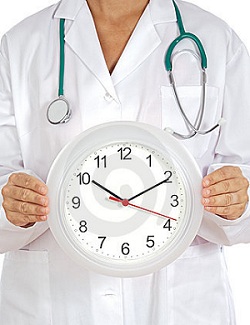 If you want to achieve the best wait times in the province, you need to know your hourly wait times, in minutes. Averages wait times, or wait times at specific times in the day, will not work. You need to know how your department functions every hour, down to the minute. (We had the best time to physician initial assessment in 2013-2014 at <1.5 hr 90th percentile.)
If you want to achieve the best wait times in the province, you need to know your hourly wait times, in minutes. Averages wait times, or wait times at specific times in the day, will not work. You need to know how your department functions every hour, down to the minute. (We had the best time to physician initial assessment in 2013-2014 at <1.5 hr 90th percentile.)
Clinicians need a thermometer
Managers need an operations report
Board members need a budget
You need hourly wait times reports
Instantaneous Wait Times
To drive change, you need live data, like a thermometer. Patients benefit when providers change their behaviour based on feedback from data about immediate circumstance.
Sure, yesterday’s information helps, if clinicians can remember what they did yesterday. Invariably, horrendous cases or surges in volume stick out in our memories from yesterday. The thousands of banal decisions made that truly impacted performance never get remembered. They reside in the background of our thinking, safe from examination.
Change happens when data becomes available in the moment. Hour by hour data can pinpoint who was working at a particular time and what care was being given.
Real time data allows leadership to query performance and address it immediately.
To get the best wait times in Ontario, we had to ask decision support to report hourly waits in minutes. Hourly reporting supported, or corrected, hunches we had about when wait times lagged. Once we had the right data, we could start trying creative solutions to improve.
Average Wait Times
‘Average’ causes pain and suffering. Reporting averages in healthcare is like reporting the average number of parachutes required for passengers jumping out of a plane.
Average wait times, average patient volumes, and average provider work speed mean nothing to a patient standing in line with tearing chest pain. Leaders should get a bit upset when they hear averages reported, or at the very least, ignore them.
What do you think? When you ask about wait times, are you getting performance from the last quarter? Are you asking for the right kind of data?
Please share your thoughts below. If you enjoyed this post, consider signing up for posts to your email. Thank you!
(photo credit: carp.ca)

